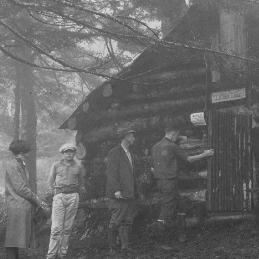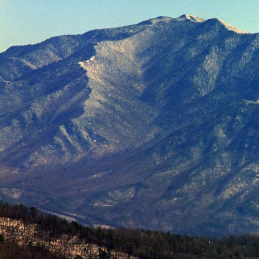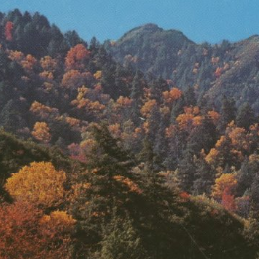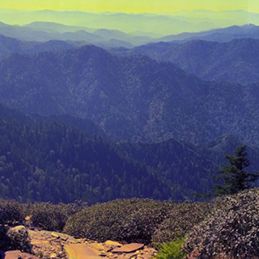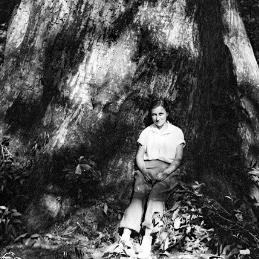Browse
Evaluation of Genetic Diversity of Flowering Dogwood. Electronic ed., 2010.
Mushrooms of the Great Smokies: A Field Guide to Some Mushrooms an Their Relatives. Knoxville, TN: University of Tennessee Press, 1960.
Special reports, memoranda, lecture syllabi, radio-script. National Park Service.
"A Model to Predict the Occurence of Surviving Butternut Trees in the Southern Appalachian Region." In Prediciting Species Occurrences Issues of Accuracy and Scale, edited by Michael J. Scott, Patricia J. Heglund, Michael L. Morrison, Jonathan B. Haufler, Martin G. Raphael, William A. Wall and Fred B. Samson, 491-497. Washington, D.C.: Island Press, 2002.
"Through the Year in the Great Smoky Mounatins National Park, Month by Month." In The Great Smokies and the Blue Ridge: The Story of the Southern Appalachians, edited by Roderick Peattie, 263-289. New York: The Vanguard Press, 1943.
B-Roll video: Flora & Fauna, Great Smoky Mountains National Park. U. S. Department of the Interior.
Recruitment History, Current Health and Conservation Genetics of Butternut (Juglans cinerea) Populations in Great Smoky Mountains National Park. Department of Forestry and Natural Resources, Purdue University, 2011.
"Arlea judithnajtae n. sp. (Collembola: Isotomidae), a temperate North American member of a Gondwanan genus." Zoosystema 39, no. 1 (2017): 87-93.
"Arthopyrenia Betulicola (Arthopyreniaceae, Dothidiomycetes), an Unusual New Lichenized Fungus From High Elevations of the Southern Appalachian Mountains." Aliso: A Journal of Systematic and Evolutionary Botany 31, no. 2 (2013): 77-81.
"Association of White Pine with Other Forest Tree Species and Ribes in the Southern Appalachians." Journal of Forestry 47, no. 4 (1949): 285-291.
"Associations Between Causal Agents of the Beech Bark Disease Complex [Cryptococcus fagisuga (Homoptera: Cryptococcidae) and Nectria spp.] in the Great Smoky Mountains National Park." Environmental Entomology 33, no. 5 (2004): 1274-1281.
"Biotic and Abiotic Factors Affecting the Genetic Structure and Diversity of Butternut in the Southern Appalachian Mountains, USA." Tree Genetics & Genomes 10 (2014): 541-554.
"Cercophora rubrotuberculata sp. nov., A New Pyrenomycete from the Great Smoky Mountains National Park." Mycologia 99, no. 3 (2007): 488-491.
"Clitocybe in Tennessee and North Carolina." The Journal of the Elisha Mitchell Scientific Society 76, no. 1 (1960): 155-167.
"Conservation Status of a Threatened Tree Species: Establishing a Baseline for Restoration of Juglans cinerea L. in the Southern Appalachian Mountains, USA." Natural Areas Journal 33, no. 4 (2013): 413-426.
"Cordyceps from the Mountains of North Carolina and Tennessee." Journal of the Elisha Mitchell Scientific Society 55, no. 1 (1939): 117-129.
"Discovery of Walnut Twig Beetle, Pityophthorus juglandis, Associated with Forested Black Walnut, Juglans nigra, in the Eastern U.S." Forests 5 (2014): 1185-1193.
"The Distribution of the Fungus, Basidiobolus Ranarum Eidam, in Fish, Amphibians, and Reptiles of the Southern Appalachian Region." Transactions of the Kansas Academy of Science 80, no. 1-2 (1977): 75-77.
"Diversity and Density of the EM Fungal Community Present in High Elevation Fraser Fir Forests of Great Smoky Mountains National Park." North American Fungi 9, no. 1 (2014): 1-21.
"Evaluation of Tree Canopy Epiphytes and Bark Characteristics Associated with the Presence of Corticolous Myxomycetes." Botany-Botanique 87, no. 5 (2009): 509-517.
"Evolutionary Consequences of Putative Intra- and Interspecific Hybridization in Agaric Fungi." Mycologia 105, no. 6 (2013): 1577-1594.
"Fleshy Saprobic and Ectomycorrhizal Fungal Communities Associated with Healthy and Declining Eastern Hemlock Stands in Great Smoky Mountains National Park." Southeastern Naturalist 13, no. 6 (2014): 192-218.
"Freshwater Ascomycetes: Cyanoannulus Petersenii, a New Genus and Species from Submerged Wood." Mycotaxon 88 (2003): 1-17.
"Great Smoky Mountains National Park's First Lichen Bio-Quest." Southeastern Naturalist 6, no. sp2 (2007): 89-98.
"Habitat Associations of Hypogeous Fungi in the Southern Appalachians: Implications for the Endangered Northern Flying Squirrel (Glaucomys sabrinus coloratus)." American Midland Naturalist 144, no. 2 (2000): 286-296.






